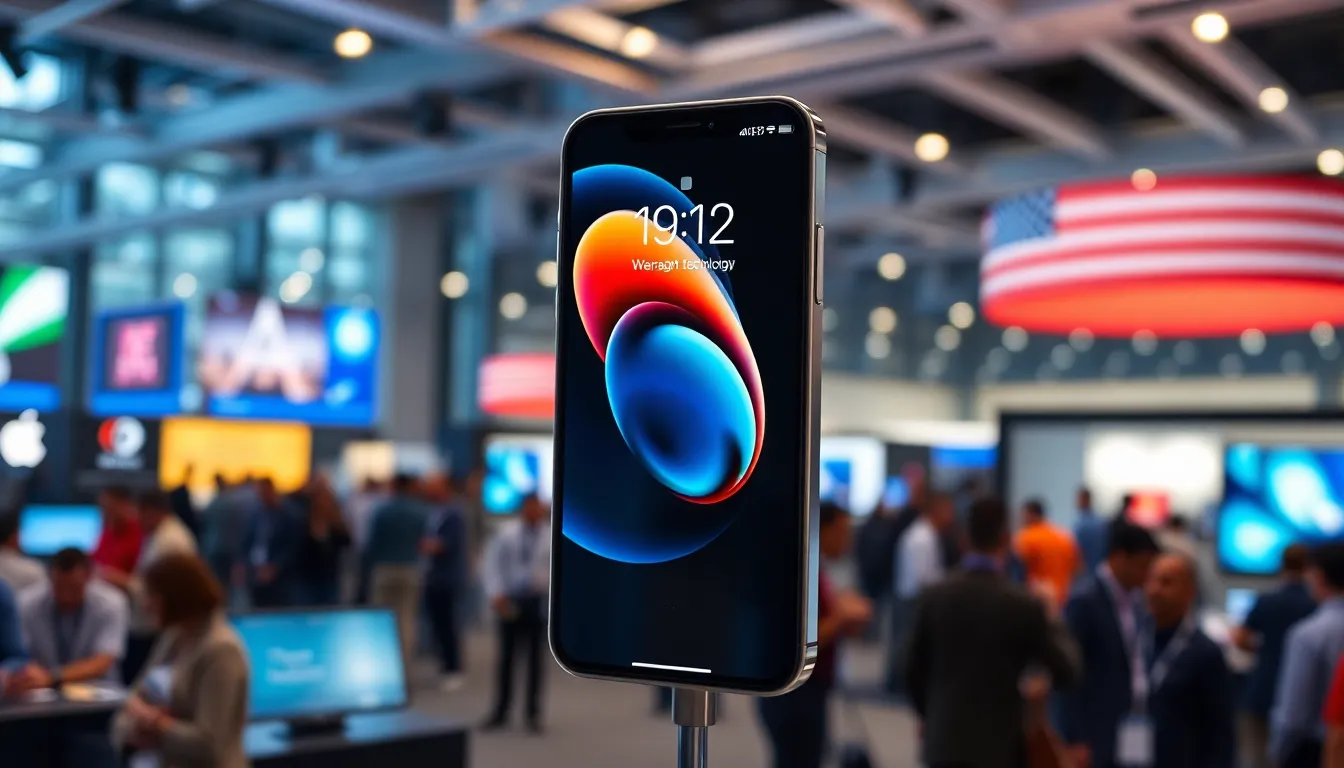The smartphone revolution began with a single device that changed how people communicate and interact with technology. The first iPhone, a groundbreaking creation by Apple, debuted on January 9, 2007. This innovative gadget combined a phone, an iPod, and an internet communicator into one sleek device, setting a new standard in mobile technology.
With its intuitive touchscreen interface and powerful features, the iPhone quickly captured the hearts of consumers and reshaped the mobile landscape. It marked the beginning of a new era, paving the way for countless advancements in smartphone design and functionality. Understanding the origins of the iPhone offers valuable insights into the evolution of technology and its impact on daily life.
Table of Contents
ToggleThe Birth of the iPhone
The first iPhone emerged from Apple’s vision to redefine mobile communication. Announced on January 9, 2007, at the Macworld conference in San Francisco, the device introduced a unique combination of features. It integrated a mobile phone, an iPod, and an internet communicator into one sleek handheld unit.
Design elements emphasized simplicity and user experience. The iPhone’s revolutionary touchscreen allowed users to interact directly with their devices, eliminating the need for physical keyboards. This interface not only enhanced accessibility but also set a new benchmark for future smartphones.
Key specifications included a 3.5-inch display, a 2-megapixel camera, and up to 16 GB of storage. The operating system, iOS, provided an intuitive platform for applications, promoting a thriving app ecosystem. By focusing on user-centric design, Apple created a device that resonated with consumers and changed how people interacted with technology.
The iPhone debuted on June 29, 2007, in the United States, receiving significant media attention and consumer excitement. The device sold 6.1 million units in its first year, proving its market impact and altering industry trajectories. The iPhone’s launch marked a significant milestone in technology, characterized by innovation and the redefinition of mobile connectivity.
Timeline of Development

The development of the iPhone involved several key milestones and significant events that shaped its creation and launch. Understanding this timeline provides insight into the innovative process behind this groundbreaking device.
Key Milestones
- 2006: Apple begins development of the iPhone under the codename “Project Purple.” This project encompassed hardware and software engineering milestones aimed at optimizing user experience.
- January 9, 2007: Steve Jobs officially announces the iPhone during the Macworld conference, showcasing its revolutionary features and functionality.
- June 29, 2007: The iPhone goes on sale in the United States, immediately capturing consumer attention and achieving sales of 6.1 million units within its first year.
- July 2008: The App Store launches, expanding the iPhone’s capabilities through third-party applications, solidifying its status in mobile technology.
- 2010: The iPhone 4 introduces the Retina display and a front-facing camera, marking a notable improvement in screen resolution and usability.
Significant Events Leading Up to Launch
- 2005: Apple’s acquisition of technology from FingerWorks enhances multitouch capabilities, setting the stage for the iPhone’s intuitive interface.
- July 2006: Apple begins production of the iPhone components, including a touchscreen and an improved battery life, crucial for the device’s functionality.
- September 2006: Apple patents the multitouch technology, integral to the iPhone’s user interface, ensuring that it stands out in the mobile phone market.
- October 2006: Major partnerships with AT&T for exclusive distribution help streamline the device’s release strategy and enhance customer reach.
- March 2007: Apple announces that the iPhone would feature a fully-fledged mobile version of Safari and other software applications, further increasing consumer interest before the launch.
Official Launch Date
The first iPhone, a groundbreaking device from Apple, officially launched on June 29, 2007. This date marked a pivotal moment in mobile technology, changing how users interact with their devices.
Features of the First iPhone
The first iPhone introduced several innovative features that set it apart from existing smartphones:
- Touchscreen Interface: The 3.5-inch touchscreen enabled intuitive navigation, eliminating the need for physical buttons.
- Camera: A 2-megapixel camera facilitated basic photography, enhancing user interaction with multimedia.
- Storage Options: Available in 4 GB and 8 GB models, it catered to varying user needs for media storage.
- iOS Operating System: The user-friendly iOS platform supported seamless integration of apps, revolutionizing mobile functionalities.
- Internet Connectivity: The device provided internet access through Wi-Fi and EDGE networks, allowing users to browse the web easily.
These features contributed significantly to the iPhone’s early success, establishing a new standard for smartphones and influencing future device development.
Impact on the Smartphone Industry
The launch of the first iPhone significantly transformed the smartphone industry. Its innovative features and design redefined user expectations and propelled competitive advancements.
Changing Consumer Behavior
The iPhone changed how consumers engaged with technology. It popularized touchscreen interfaces and emphasized mobile internet connectivity, leading to increased smartphone adoption. Consumers began prioritizing functionality and ease of use, driving demand for applications and mobile services. The seamless integration of communication, entertainment, and productivity within one device shaped new expectations in mobile industry standards. User preferences shifted toward devices offering rich app ecosystems and intuitive designs, influencing manufacturers’ development strategies.
Competition and Market Response
The introduction of the iPhone sparked intense competition within the smartphone market. Established companies, such as Nokia and BlackBerry, faced declining sales as they struggled to innovate. In response, competitors like Samsung and HTC accelerated their smartphone offerings, adopting features similar to those of the iPhone. This race for technological advancement prompted significant investments in research and development across the industry, leading to a rapid evolution of smartphone capabilities. As a result, the release of diverse Android devices further diversified the market, providing consumers with a wider range of choices while maintaining the emphasis on user experience established by the iPhone.
The first iPhone’s introduction marked a pivotal moment in technology history. Its innovative design and features not only transformed the smartphone landscape but also reshaped how people interact with technology daily. By pioneering touch interfaces and integrating multiple functionalities into one device, it set the stage for future advancements in mobile communication.
As the smartphone market evolved, the iPhone’s influence continued to drive competition and innovation. Understanding its origins and impact helps appreciate the technological advancements that followed. The legacy of the first iPhone remains evident in today’s devices, proving that it was more than just a phone; it was a catalyst for change in the digital age.



